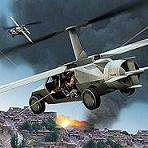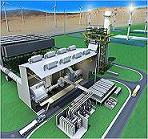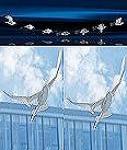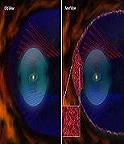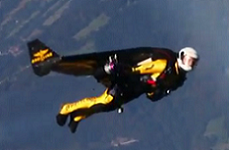- GD&T
GENERAL DIMENSIONING- International Paper Size Standards
- Technical Drawing Styles
- ISO And ANSI Projections
- ANSI Technical Drawing Views
- Technical Drawing Dimesioning Types
- ANSI and ISO Geometric Tolerancing Symbols
- Geometric Tolerancing Reading
- Taylor Principle Rule#1
- Form Tolerances
- Profile Tolerances
- Orientation Tolerances
- Location Tolerances
- Runout Tolerances
- TOLERANCES
ANSI AND ISO- Tolerancing and Engineering Standards
- Hole and Shaft Basis Limits And Fits
- ISO International System For Limits And Fits
- International Tolerance Grade (IT)
- Fundamental Deviations For Hole and Shaft Basis
- ISO Tolerance Band IT01-IT16
- Calculation Of International Tolerance
- Calculation of Upper and Lower Deviation For Shaft
- Calculation of Upper and Lower Deviation For Holes
- ISO Shaft Tolerances (3mm-400mm)
- ISO Shaft Tolerances (400mm-3150mm)
- ISO Hole Tolerances (3mm-400mm)
- ISO Hole Tolerances (400mm-3150mm)
- ANSI Standard Limits and Fits
- METAL CUTTING TECHNOLOGIES
- Terms and Definitions of the Cutting Tools
- Cutting Tool Materials
- Selection of Carbide to machine the work-part
- Identification System For Indexable Inserts
- Work-Part Materials
- Machinability and the specific cutting force
- Machinability of the Certain Material Evaluations
- Cutting Forces and Chip Formations
ANSI Standard Limits and Fits (ANSI B4.1-1967,R1974)
ANSI, This American Standard for preferred limits and fits for cylindrical parts presents definitions of terms applying to fits between nonthreaded cylindrical and makes some recommendations on preferred sizes, fits, tolerances, and allowances for use where they are applicable. The ANSI B4.1 charts data are provided in thousandths (.001) of an inch. ANSI can be defined ANSI metric or ANSI Inch system. ANSI decimal inch system is based on ANSI Standard (B4.1 - 1967(1979). ANSI Standard (B4.2 - 1978)metric system is based on ISO millimeter system. ANSI - American National Standards Institute. ISO is International Organization for Standardization. ANSI standard is in accord with the recommendations of American-British-Canadian (ABC) conferences up to diameter of 20 inches.The ABC proposal comprises:(a)A grade system of fundamental tolerances for diameters 0.04 inch to approximately 20 inches, the tolerance values in each grade being to the diameter by a given law of formula and each grade of tolerance being approximately related to the others in the system in a preferred number ratio (R5 series, with 60 percent increments). (a) A series of unilateral hole limits derived from the fundamental tolerances, for use with a hole basis system. (c) A series of shaft, one of these limits being determined by the allowance ( according to some technical requirement), the other being derived from it by addition or subtraction of the fundamental tolerance.(d) A selection of fits made by recommended association of certain of the holes and shaft, the selection being adequate to cover most engineering requirements.
What can be effective for selection of the fits?
Many factor can be affective for selecting proper fits such as bearing loads, speed, materials, length of engagement,
lubrication, humidity, and temperature etc.
This all affect must be taken into consideration in the selection of the fits for proper applications.
ANSI B4.1 - 1967(1979), R1974 Standard Tolerances
ANSI B4.1 standard implements 10 tolerance grades to meet the requirements of various production branches for accuracy of products. ANSI B4.1 standard defines a system of preferred fits only for basic sizes up to 19.69 inch. ANSI B4.1 system of tolerances is prescribed by the standard for basic sizes up to 200 in. ANSI B4.1 Tolerance Table provides a suitable range from which appropriate tolerance for holes and shaft can be selected. This enables the use of standard gages. Table shown below
| NOMINAL( BASIC) SIZES (INCHES) | INTERNATIONAL TOLERANCE GRADES | ||||||||||||||||||
| OVER | UP TO INCL. | IT4 | IT5 | IT6 | IT7 | IT8 | IT9 | IT10 | IT11 | IT12 | IT13 | ||||||||
| 0 | 0.12 | 0.12 | 0.15 | 0.25 | 0.4 | 0.6 | 1.0 | 1.6 | 2.5 | 4 | 6 | ||||||||
| 0.12 | 0.24 | 0.15 | 0.20 | 0.3 | 0.5 | 0.7 | 1.2 | 1.8 | 3.0 | 5 | 7 | ||||||||
| 0.24 | 0.40 | 0.15 | 0.25 | 0.4 | 0.6 | 0.9 | 1.4 | 2.2 | 3.5 | 6 | 9 | ||||||||
| 0.40 | 0.71 | 0.2 | 0.3 | 0.4 | 0.7 | 1.0 | 1.6 | 2.8 | 4.0 | 7 | 10 | ||||||||
| 0.71 | 1.19 | 0.25 | 0.4 | 0.5 | 0.8 | 1.2 | 2.0 | 3.5 | 5.0 | 8 | 12 | ||||||||
| 1.19 | 1.97 | 0.3 | 0.4 | 0.6 | 1.0 | 1.6 | 2.5 | 4.0 | 6 | 10 | 16 | ||||||||
| 1.97 | 3.15 | 0.3 | 0.5 | 0.7 | 1.2 | 1.8 | 3.0 | 4.5 | 7 | 12 | 18 | ||||||||
| 3.15 | 4.73 | 0.4 | 0.6 | 0.9 | 1.4 | 2.2 | 3.5 | 5 | 9 | 14 | 22 | ||||||||
| 4.73 | 7.09 | 0.5 | 0.7 | 1.0 | 1.6 | 2.5 | 4.0 | 6 | 10 | 16 | 25 | ||||||||
| 7.09 | 9.85 | 0.6 | 0.8 | 1.2 | 1.8 | 2.8 | 4.5 | 7 | 12 | 18 | 28 | ||||||||
| 9.85 | 12.41 | 0.6 | 0.9 | 1.2 | 2.0 | 3.0 | 5.0 | 8 | 12 | 20 | 30 | ||||||||
| 12.41 | 15.75 | 0.7 | 1.0 | 1.4 | 2.2 | 3.5 | 6 | 9 | 14 | 22 | 35 | ||||||||
| 15.75 | 19.69 | 0.8 | 1.0 | 1.63 | 2.5 | 4 | 6 | 10 | 16 | 25 | 40 | ||||||||
| 19.69 | 30.09 | 0.9 | 1.2 | 2.0 | 3 | 5 | 8 | 12 | 20 | 30 | 50 | ||||||||
| 30.09 | 41.49 | 1.0 | 1.6 | 2.5 | 4 | 6 | 10 | 16 | 25 | 40 | 60 | ||||||||
| 41.49 | 56.19 | 1.2 | 2.0 | 3 | 5 | 8 | 12 | 20 | 30 | 50 | 80 | ||||||||
| 56.19 | 76.39 | 1.6 | 2.5 | 4 | 6 | 10 | 16 | 25 | 40 | 60 | 100 | ||||||||
| 76.39 | 100.9 | 2.0 | 3 | 5 | 8 | 12 | 20 | 30 | 50 | 80 | 125 | ||||||||
| 100.9 | 131.9 | 2.5 | 4 | 6 | 10 | 16 | 25 | 40 | 60 | 100 | 160 | ||||||||
| 131.9 | 171.9 | 3 | 5 | 8 | 12 | 20 | 30 | 50 | 80 | 125 | 200 | ||||||||
| 131.9 | 200 | 4 | 6 | 10 | 16 | 25 | 40 | 60 | 100 | 160 | 250 | ||||||||
| Tolerances in Thousandths of an Inch. All tolerances above the Blue line are in accordance with ABC (American-British, Canadian) agreements. | |||||||||||||||||||
ANSI B4.1 - 1967(1979), R1974 Standard Preferred Basic Sizes
All given dimensions in table are in inches. Based on ANSI B4.1, basic size of all mating parts should be chosen from the fractional and decimal series in the table below.
| Fractional | Decimal | Fractional | Decimal | Fractional | Decimal | ||||||||||||||
| 1/64 | 0.015625 | 2-1/4 | 2.2500 | 9-1/2 | 9.5000 | ||||||||||||||
| 1/32 | 0.03125 | 2-1/2 | 2.500 | 10 | 10.000 | ||||||||||||||
| 1/16 | 0.0625 | 2-3/4 | 2.7500 | 10-1/2 | 10.500 | ||||||||||||||
| 3/32 | 0.09375 | 3 | 3.000 | 11 | 11.0000 | ||||||||||||||
| 1/8 | 0.1250 | 3-1/4 | 3.2500 | 11-1/2 | 11.5000 | ||||||||||||||
| 5/32 | 0.15625 | 3-1/2 | 3.500 | 12 | 12.0000 | ||||||||||||||
| 3/16 | 0.1875 | 3-3/4 | 3.7500 | 12-1/2 | 12.5000 | ||||||||||||||
| 1/24 | 0.2500 | 4 | 4.000 | 13 | 13.000 | ||||||||||||||
| 5/16 | 0.3125 | 4-1/4 | 4.2500 | 13-1/2 | 13.5000 | ||||||||||||||
| 3/8 | 0.3750 | 4-1/2 | 4.5000 | 14 | 14.0000 | ||||||||||||||
| 7/16 | 0.4375 | 4-3/4 | 4.7500 | 14-1/2 | 14.5000 | ||||||||||||||
| 1/2 | 0.5000 | 5 | 5.000 | 15 | 15.0000 | ||||||||||||||
| 9/16 | 0.5625 | 5-1/4 | 5.2500 | 15-1/2 | 15.5000 | ||||||||||||||
| 5/8 | 0.6250 | 5-1/2 | 5.500 | 16 | 16.0000 | ||||||||||||||
| 11/16 | 0.6875 | 5-3/4 | 5.7500 | 16-1/2 | 16.5000 | ||||||||||||||
| 3/4 | 0.7500 | 6 | 6.000 | 17 | 17.000 | ||||||||||||||
| 7/8 | 0.8750 | 6-1/2 | 6.500 | 17-1/2 | 17.5000 | ||||||||||||||
| 1 | 1.0000 | 7 | 7.000 | 18 | 18.0000 | ||||||||||||||
| 1-1/4 | 1.2500 | 7-1/2 | 7.500 | 18-1/2 | 18.5000 | ||||||||||||||
| 1-1/2 | 1.500 | 8 | 8.000 | 19 | 19.0000 | ||||||||||||||
| 1-3/4 | 1.7500 | 8-1/2 | 8.500 | 19-1/2 | 19.5000 | ||||||||||||||
| 2 | 2.000 | 9 | 9.000 | 20 | 20.0000 | ||||||||||||||
ANSI B4.1 - 1967(1979), R1974 Standard Fit Designations
ANSI B4.1 Standard arranged fits classes in three general groups according to the field and type of usage. Standard fits are designated by means of some symbols which facilitate reference to classes of fits to get better understanding. The symbols are not intended to be shown on the manufacturing detail drawings, only sizes should be specified on the detail drawings.
1-) Running or Sliding Fits [RC]
2-) Locational Fits [LC, LT, LN]. This standard can be explained in three groups.
a-) Clearance Locational Fits [LC]
b-) Transition Locational Fits [LT]
c-) Interference Locational Fits [LN]
3-) Force or Shrink Fits [FN]
These letter symbols RC, LC, LT, LN, and FN are used with numbers representing the fit class. like RC4 represent class 4. One of these symbols "with two letter and one number" represent a complete fit. This fit can be interference, in and max clearance, and limits of sizes for mating parts.
1-) Running And Sliding Fits (RC):
Running and Sliding fits ranges are designated with RC1 to RC9.Throughout the range of the sizes limits of clearance for this fit are intended to provide a running performance with suitable lubrication allowance. Loosest of the class fits, used when a shaft is must move freely inside a hole or bearing, and the positioning of the shaft is not critical in this fit like sliding gears and clutch disks, pivots, running and sliding fits of shafts, guiding bushings, pistons of hydraulic machines, etc. There are nine such fits RC1 to RC9. The lower RC numbers are the tighter fits, the higher numbers are the looser fits. RC1 to RC9 Fits may be described as follows;
RC1; Close Sliding Fits: This kind of fits are intended for the accurate location of parts which must assemble without noticeable play.
RC2; Sliding Fits: This kind of fits are intended for the accurate location but with greater maximum clearance than class RC1. Parts made to this fit turn and move easily. This type is not designed for free run. Sliding fits in larger sizes may seize with small temperature changes.
RC3; Precision Running Fits: This kind of fits are about the closest fits which can be expected to run freely. Precision running fits are intended for precision work at low speed, low bearing pressures, and light journal pressures. RC3 is not suitable where noticeable temperature differences occur.
RC4; Close Running Fits: This kind of fits are mostly for running fits on accurate machinery with moderate surface speed, bearing pressures, and journal pressures where accurate location and minimum play are desired. This kind of fits also can be described as smaller clearances with higher requirements for precision fit.
RC5 and R6; Medium Running Fits: This kind of fits are designed for machines running at higher running speeds, considerable bearing pressures, and heavy journal pressure. This kind of fits also can be described with greater clearances with common requirements for fit precision.
Copyright ©2010-2023 Coban Engineering.All Rights Reserved.


